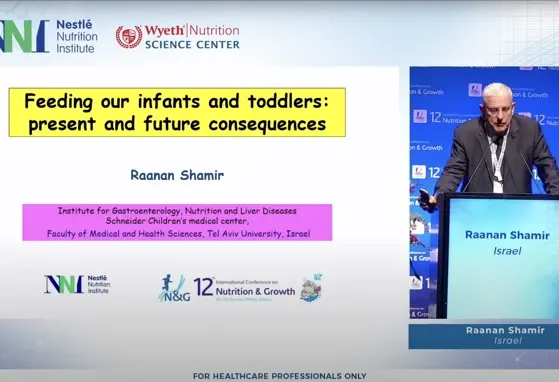'Loss of the Mediterranean diet': Children in Southern Europe more at risk of severe obesity, WHO finds
New research from the World Health Organization reveals that school-aged children in Southern Europe are at greater risk of being “severely obese” than those in the north of the region. Treatment and management options across the region are “not widespread” and have “limited impact”, the researchers warn.
Earlier this week, the study was presented at this year’s European Congress on Obesity in Glasgow, UK, and published in journal Obesity Facts. It showed a “wide gradient” in levels of severely obese children across Europe, with countries in the south of the region generally suffering from higher rates.
According to the WHO definition, the prevalence of severe obesity ranged from a low of 1% in Swedish and Moldovan children to a high of 5.5% in Maltese children. Countries from Southern Europe (Greece, Malta, Italy, Spain and San Marino) had the highest levels of severe obesity, above 4%. In countries from Western and Northern Europe, such as Belgium, Ireland, Norway and Sweden, the prevalence was below 2%.
This is the first comparative study with data on severe childhood obesity from European countries. Previous research has focused on 'regular' child obesity between countries.
The higher prevalence rates of severe obesity in the south is in line with previous studies of obesity and overweight children, adolescents and adults, the authors noted.
The paper was headed up by Dr Angela Spinelli of the National Institute of Health based in Rome, Italy. It is part of the WHO Childhood Obesity Surveillance Initiative (COSI) led by Dr João Breda, head of the WHO European Office for Prevention and Control of Noncommunicable Diseases.
Interventions and health service readiness
Dr Breda stressed that severe obesity is linked to a number of negative health outcomes, including immediate and long-term cardiovascular, metabolic issues. “Evidence suggests a strong association between childhood severe obesity and adulthood higher risks of obesity. Also, cardiovascular profile and diabetes has been described as higher in severe obese children,” he told Food Navigator.
Indeed, when compared with children with overweight or obesity children with severe obesity have notably a much worse cardio-metabolic risk factor profile.
Furthermore, treatment and management options have limited impact and are not widespread in the WHO European Region.
Dr Breda said increased intervention to prevent the issue is needed alongside greater preparedness to address symptoms. “The general interventions and best-buys for tackling NCDs including obesity [are] environmental and individual interventions in a balanced fashion. Also ensure health services are prepared to deal with severe obesity problems particularly using a primary health care approach and an appropriate integration of services and care based on a people centered approach,” Dr Breda suggested.
Diet, exercise and education
The report authors state that the cause of this north-south divide in Europe “remains elusive”.
However, Dr Breda said that the root of the problem is likely the same as the obesity pandemic, pointing to “lower levels of physical activity and unhealthy diets combined with social factors like parents’ educational level”.
The paper noted lower height- for- age ratio found in Southern European countries. Other explanations may be linked to birth weight and sleep duration, as well as dietary or physical activity patterns.
“The loss of the Mediterranean diet in Southern European countries could be linked to this severe obesity problem,” the report concluded.
The authors also flagged a possible link between parental education and child severe obesity. In six out of eight countries that had parental education data included in the analysis, children whose mothers had a primary or secondary school education had a higher prevalence of severe obesity than children whose mothers had a higher education.
The authors wrote: "Differences in the mother's education level reinforce that a problem of inequality does exist and that it should be considered when devising strategies to tackle childhood severe obesity. School-based health promotion interventions have the potential to reach children from all socioeconomic backgrounds, and may, therefore, provide an important avenue for addressing health inequalities.
“Severe obesity is a serious public health issue and the results of this study show that a large number of children in Europe suffer from it. Given its impact on education, health, social care and the economy, obesity needs to be addressed via a range of approaches, from prevention to early diagnosis and treatment."
Source
Prevalence of Severe Obesity among Primary School Children in 21 European Countries
Obesity Facts, 12:244–258
Authors: A Spinelli, M Buoncristiano, VA Kovacs, A Yngve, I Spiroski, G Obreja, G Starc, N Pérez, A Rito, M Kunešová, V Sant’Angelo, J Meisfjord, IBergh, C Kelleher, N Yardim, I Pudule, A Petrauskiene, V Duleva, A Sjöberg, A Gualtieri, M Hassapidou, J Hyska, G Burazeri, C Petrescu, M Heinen, H Takacs, H Zamrazilová, T Bosi, E Sacchini, I Pagkalos, A Cucu, P Nardone, P Gately, J Williams, J Breda
If you liked this post you may also like


Learning to Eat: Early life texture experience in the development of eating behaviors and dietary patterns


Feeding our infants and toddlers: present and future consequences